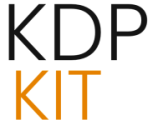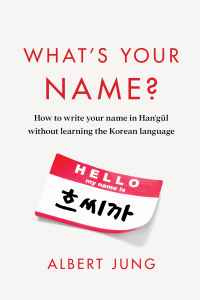
III. Market Impact and Economic Transformation for Creators
The operational details are fascinating, but the true gravity of Kindle Translate lies in its potential to rewrite the economics of global publishing. This is about accessing markets that were, until last week, locked behind a financial and logistical gate.
Addressing the Underpenetration of International Content on Amazon
Amazon’s own data speaks volumes about the scale of the problem this tool aims to solve. The company framed the launch by revealing that less than five percent of titles on the primary Amazon storefront are accessible in more than one language. Think about that staggering figure: in a globalized digital economy, 95% of the self-published catalog is essentially siloed within a single linguistic border. This isn’t a niche problem; it’s a massive structural inefficiency.
This statistic positions Kindle Translate as the primary engine designed to overcome the fragmentation that has historically kept content locked away. Millions of readers whose primary language is Spanish, German, or soon-to-be-supported languages, have seen a fraction of the selection available to English readers. For the independent author, this represents an expansion from a single market (e.g., US/UK) to a potential network of dozens of international Kindle stores, all powered by the same core manuscript file. This is an opportunity not just for more revenue, but for building a truer global platform presence. The democratization of international book distribution starts here.
External Context: For a broader understanding of the global ebook market before this shift, you might look at recent analysis on ebook publishing trends worldwide, keeping in mind that new AI translation services dramatically alter these projections going into 2026.
The Elimination of Upfront Translation Cost Barriers for Independent Writers
This is the headline economic shockwave. Professional, human-level localization for a full-length novel—the kind that respects prose, tone, and regional slang—often costs between $0.10 and $0.25 per word. For an 80,000-word book, that translates to an upfront expense of $8,000 to $20,000. This high, non-recoverable capital investment was the insurmountable wall separating the *commercially successful* independents from the rest of the pack when it came to global reach. Traditionally, only books with guaranteed sales had a justifiable business case for this level of investment.
The service’s introductory model—providing translation services at no direct monetary cost to the participating author during the beta phase—instantly dissolves this barrier. The ability to experiment globally without sinking capital is an unprecedented advantage for emerging voices. While we anticipate Amazon will eventually implement a low-cost or royalty-based model post-beta—perhaps taking a small percentage on the backend—the initial free rollout serves as a massive market incentive. This directly challenges the established localization industry by proving that speed and scale can be achieved for $0.00 upfront.. Find out more about Kindle Translate integration KDP dashboard.
Enhanced Discoverability Through KDP Select and Kindle Unlimited Participation
Translation is only half the battle; the second half is getting discovered by the new audience. Amazon ensures this by confirming that translated works utilizing Kindle Translate remain fully eligible for the KDP Select program. Why does this matter? Because it grants the translated edition access to the colossal subscriber base of **Kindle Unlimited** across various international Kindle stores.
For an author, this means:
This integration is strategic: it fuels the Kindle Unlimited ecosystem with more content in more languages, driving more value for the subscription service, which in turn, drives more traffic back to KDP authors. It’s a powerful feedback loop cemented by the inclusion of the new AI editions.
Testimonials and Early Endorsements from the Independent Author Community
The industry buzz isn’t just theoretical; it’s being validated by authors already in the testing pool. Long-time advocates for accessible internationalization solutions are speaking out. For instance, established independent creator Roxanne St. Claire was among those testing the beta, noting that for decades, indie authors have lacked a “cost-effective and trustworthy” path to foreign language translation.
Quotes like this provide vital social proof. They validate Amazon’s hypothesis that a massive, latent demand for this tool existed, moving the conversation from “Will AI translation work?” to “How do I best use this *now*?” Such endorsements are crucial for convincing more risk-averse authors to upload their core IP to the AI translation pipeline, recognizing it as a legitimate, if imperfect, pathway to global readership.. Find out more about Kindle Translate integration KDP dashboard guide.
IV. Analysis of Visibility, Labeling, and Consumer Perception
The speed and low cost create the supply; the next challenge is managing demand and perception. How Amazon handles transparency and quality flags will determine whether this tool becomes a gold standard or a source of consumer backlash. This section is about managing the narrative around your AI-assisted global presence.
The Mandatory “Kindle Translate” Labeling for Transparency
Amazon has wisely acknowledged the elephant in the room: machine translation, while powerful, is imperfect, especially regarding cultural context. To safeguard its platform reputation and set consumer expectations accurately, all AI-translated works must carry a clear, distinct label identifying their origin as “Kindle Translate.”
This transparency is a direct acknowledgment of the potential for AI to miss cultural nuances or idiomatic expressions. It’s a necessary step to avoid accusations of deceptive marketing. The label acts as a disclaimer, essentially telling the reader, “This text was generated by AI and reviewed by the author. It might not have the polish of a fully human-localized text.” This is a critical point for authors who rely on subtle character voices or complex world-building. Understanding the implications of this label is vital for your branding strategy. Check out the latest updates on KDP content guidelines for the most current labeling rules.
The Strategic Importance of Reader Samples for Quality Vetting
The label handles expectations, but the reader sample handles personal vetting. Amazon’s inclusion of easily accessible previews for the translated content acts as a necessary, secondary quality check—one driven entirely by the consumer. Potential buyers in Spain or Germany can now instantly assess the fluency and readability of the German-to-English or English-to-Spanish version before committing their currency.
This empowers the consumer to navigate the spectrum between raw machine output and fully polished human text. If your book is a complex piece of literary fiction, the sample will immediately reveal the AI’s shortcomings, and that reader will likely pass. If it’s a straightforward procedural guide or a fast-moving, plot-driven romance where dialogue is less nuanced, the AI version may pass muster. The sample becomes the crucial bridge of trust. Your actionable takeaway? Always review the sample in the target language yourself, even if you don’t speak it fluently. Look for structural oddities, formatting breaks, or anything that looks utterly foreign, and plan your post-editing budget accordingly.
Implications for Genre Fiction and High-Volume Serialized Content. Find out more about Kindle Translate integration KDP dashboard tips.
While all genres benefit, Kindle Translate offers a disproportionate advantage to specific market segments. Think about the high-volume, rapid-release cycles common in **romance, science fiction, and fantasy**. These genres often thrive on reader loyalty and rapid consumption; readers tear through a series and want the next installment *now*.
For these creators, the tool allows them to quickly saturate multiple linguistic markets simultaneously. An author can release Book 1 in five languages on the same day as the English release, capitalizing on genre-specific reader loyalty across borders far more effectively than previous methods allowed. This rapid international deployment can lead to quick international best-seller status in niche sub-categories, driving higher overall lifetime earnings from the core intellectual property.
The Unaddressed Questions of Post-Beta Pricing and Royalty Structure Evolution
This is the critical forward-looking element that keeps savvy authors up at night. The beta is free. Fantastic. But what happens on the day the introductory period ends? The ambiguity surrounding the long-term financial model will ultimately dictate the service’s sustained utility for professional authors.
The questions are pointed:
Until clarity arrives on these points, authors must treat the beta as a massive, no-risk market research opportunity. Start testing your genres, find out where your organic international demand lies, and have your hybrid human-editing budget prepared for when the pricing model shifts. Ignoring this looming question is the fastest way to lose your early advantage.
V. Broader Industry Repercussions and Competitive Landscape. Find out more about Kindle Translate integration KDP dashboard strategies.
Kindle Translate isn’t operating in a vacuum. Its launch is sending shockwaves through the entire digital shelf and directly challenging incumbent service providers. The implications are macroeconomic for the publishing sector.
The Acceleration of Global Content Availability Across the Digital Shelf
The macro effect on the entire digital bookstore is clear: we are about to see a significant, rapid influx of multilingual content. This will redefine what a “complete” catalog looks like on the Amazon platform. For years, “completeness” was implicitly defined by English-language titles plus a handful of major international translations from traditional publishers.
Now, competition is changing. Authors who previously dominated a single-language market may find themselves competing against their own translated editions in dozens of other territories. This forces a re-evaluation of market saturation—but it also forces readers to adapt. A reader in Japan, seeing more native-language content, might shift their reading habits away from English-language consumption altogether, leading to an overall larger pie for everyone who translates.
Challenges to Traditional Human Translation and Localization Industries
The direct competitive pressure on freelance translators and specialized localization agencies is extreme, driven by the near-infinite cost differential. Why hire a human translator for $10,000 when the AI version is free and ready in days? This isn’t a suggestion that human translators will disappear; rather, it forces an evolution in their business model. The future for high-quality human translation services will likely pivot to two areas:
For mass-market digital content, the AI is the first-pass workhorse, pushing human expertise upmarket and into the necessary role of quality controller. Authors must consider this for their long-term IP management—the hybrid model mentioned earlier is likely the most financially sound approach for maintaining a high standard.
The Ethical and Ownership Concerns Surrounding AI-Generated Textual Assets
Diving into the IP realm reveals unsettled legal and ethical questions that KDP authors must navigate carefully. The core issue revolves around ownership. When Amazon’s neural network generates the Spanish text, who owns the copyright to that derivative work?
Standard KDP terms grant the author a nonexclusive, irrevocable distribution license for the original work. Does that license automatically—and ethically—extend to the machine-created derivatives? Amazon has been conspicuously vague on this point in the initial disclosures. An author’s most valuable asset is their copyright. Until clarity is provided on whether the AI-generated text falls under the original work’s protection or if it creates a new, potentially ambiguous, asset, authors should proceed with caution, especially concerning the exact wording in the KDP Terms and Conditions regarding derivative works.
Amazon’s Continued Hegemony in Author Services and Platform Lock-In Strategy
Framing this launch within Amazon’s overarching corporate strategy, Kindle Translate is a masterstroke in **platform lock-in**. By bundling an essential, high-value, and previously cost-prohibitive service—global distribution—directly into the KDP ecosystem, Amazon further cements its position as the indispensable gateway to the global publishing marketplace.
Why would an author choose a competing platform (like Draft2Digital or IngramSpark) when Amazon is offering the only tool that provides rapid, zero-cost market access? The utility becomes so high that migration becomes a significant professional risk. This strategy ensures that KDP remains the default—and perhaps only viable—option for millions of self-published authors looking to scale internationally, effectively owning the entire publishing lifecycle from ‘Write’ to ‘World Distribution.’
VI. Technological Underpinnings and Future Platform Evolution
To truly leverage this tool, you need to understand the presumed technology powering it and look ahead to where Amazon is likely investing next in this pipeline.. Find out more about Eliminate upfront translation costs for indie authors definition guide.
Reliance on Advanced Neural Network Architecture for Nuance Handling
The jump from the clunky, phrase-based translation of a decade ago to today’s capability suggests a deep reliance on **advanced neural network architecture**. Older statistical machine translation (SMT) struggled with context, leading to nonsensical sentence structures when translating across languages with vastly different grammatical rules. Modern neural machine translation (NMT), which is presumed here, processes entire sentences or even paragraphs at a time, understanding context, tense, and implied meaning far better.
This reliance on cutting-edge AI signals a commitment to continuous fidelity improvement. If the initial English-Spanish pair is producing high-quality results, expect rapid iteration. The aim is clearly to close the gap between machine and human translation quality with every passing quarter, moving the “automatically evaluated for accuracy” benchmark ever higher. This trajectory suggests that the need for deep human post-editing will decrease over time for simpler prose.
The Pipeline for Future Language Rollouts and Emerging Market Potential
The initial English-Spanish and German-English pairs are strategic starting points. Spanish covers vast swaths of the Americas and Spain. German covers a large, affluent European market. But where does Amazon go next? We can speculate by looking at global reading trends and Amazon’s existing international store presence:
This pipeline signals an ongoing, aggressive investment in truly globalizing the self-publishing landscape. Your strategy should include forecasting which languages might be supported in the next 12-18 months so you can have your next translation project ready to go the day the language pair launches.
Conclusion: Your Action Plan for the AI Translation Era
The launch of Kindle Translate on November 8, 2025, is not a minor software update; it’s a significant democratization event in global publishing. The operational mechanics are built for speed and familiarity, challenging the status quo by leveraging AI to unlock the 95% of Amazon’s catalog currently trapped by language. The economic impact is immediate—eliminating the $10,000+ upfront cost for new markets—but the long-term utility hinges on Amazon’s eventual pricing model.
The key takeaway is that inaction is now a choice to remain a single-language publisher. You have an obligation to test this new capability.
Key Takeaways and Actionable Next Steps:
What’s your first move? Are you deploying your backlist to Spanish immediately, or are you waiting to see how the market reacts to the mandatory labeling? Share your strategy for navigating this new global playing field in the comments below. Every author is now a potential global publisher—how will you stake your claim?







